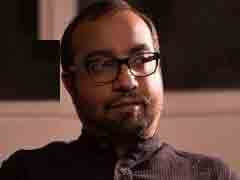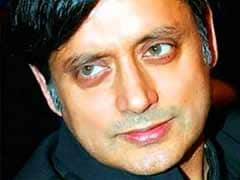With Today's Speech, Obama Strikes Gold

Ashok Malik
Few world leaders are such gripping communicators and have as advanced a masterly ability to exploit every possible media and public moment as Barack Obama and Narendra Modi.
The two men are different in many ways. Obama is a studious, professorial sort. If he hadn't been in politics, he may still have been in a university, teaching Law. Modi is much more demonstrative, the 24/7 politician who was educated as he went along, a case study in experiential learning.
Yet, the two have much in common as well. Both perceive themselves as removed from traditional elites and power establishments in their capital cities. Both won elections (Obama in 2008, Modi six years later) positioning themselves as outsiders who would fix a rotten, incestuous capital city and rescue a broken economy.
Modi used his underprivileged background to devastating impact during the campaign and his biography as a tea vendor's son became a badge of honour. On January 27, at his Town Hall address in New Delhi, Obama not only referred to Modi's childhood but spoke of his (Obama's) grandfather having worked as an ordinary army cook, and of racial prejudice that people of his colour sometimes still face in America.
Yet, like Modi, there was no victimhood or defensiveness to such references. Rather, Obama sought to talk up his audience, painting a happy picture of a "defining partnership" in the 21st century between two democracies committed to "fundamental freedoms". In his crisp and yet expansive address, he brought in a variety of subjects - climate change, terrorism, diversity, social discrimination, religious liberties, economic hope, jobs and aspirations, defence and security challenges.
Each of the names he mentioned - Swami Vivekananda, "who brought Hinduism and yoga" to America, Mahatma Gandhi, who inspired Martin Luther King Jr, Mary Kom, Shah Rukh Khan, Kailash Satyarthi, Milkha Singh, Mary Kom - was telling of the diversity and richness that makes India so special. In a sense, Obama was seeking to convey that it was this multiplicity of India that made it a democratic miracle. To constitute this unexceptionable comment, this cautionary homily to a nation and a society that has by and large retained its equanimity in a region torn apart by religious and sectarian violence, as a rebuke to Narendra Modi and his government is ridiculous. Visiting presidents are not as unsubtle, undiplomatic and as abusive of hospitality as professional BJP baiters who use every platform and every television studio to chant their favoured propaganda.
As a performer, Obama was mesmerising. Whatever one may say about his years in the White House, he is one of the seriously gifted political communicators of our time.
On Tuesday morning, Obama freed himself from the shackles of protocol and came into his own. He was what he was first noticed for - talking to ordinary people as if he were addressing each one in the crowd individually. Over the past two days, he had played second fiddle to Modi right from the airport, where his dark suit was outshone by Modi's telegenic orange shawl.
Perhaps this was to be expected. Obama was the guest, and Modi was the host and star batting on his home turf. It was his first Republic Day as Prime Minister; Obama was only the chief guest. Nothing could rain on Modi's parade, not even rain itself.
Obama is a quiet, reserved man. He came in as a transactional president, without too much of a grand strategy. Even so, he has made a huge effort with both his visits to India. In 2010, he came to a country that he thought was destined for great things and for a longer economic boom. He reached out to India, promised to help it become a member of everything from the United Nations Security Council to the Nuclear Suppliers' Group. Of course, he was betting on an Indian economic growth that would also benefit American companies and job creation.
India let him and itself down. It used the very moment to reverse its economic course. Financial year 2010-11 ended an eight-year run that saw an average of 8.3 per cent GDP growth per year. In 2010, Obama was enthusiastic, but Manmohan Singh, the Indian Prime Minister, was tiring and ageing, his political capital having run out.
This visit has been a contrast. Obama is ending a two-term presidency and looking to a post-presidency that is never easy to define or adjust to. He is tired and as he told his Sir Fort Auditorium audience on January 27, has more grey hair than when he started. In New Delhi, he renewed some of his pledges of 2010, in the last-chance optimism that India finally has a leader, a government and a popular mandate to deliver on the bets the America of the early 2000s made. On the other hand, Modi was clearly the more energetic interlocutor in the past three days. He is at the beginning of his term and hoping to lay the foundations of his legacy.
That is why this meeting of two quality communicators - one the most left-wing of recent US Presidents, the other the most right-wing of Indian Prime Ministers - was so compelling. It wasn't quite what Kipling had in mind, but made for a unique Ballad of East and West.
Disclaimer: The opinions expressed within this article are the personal opinions of the author. NDTV is not responsible for the accuracy, completeness, suitability, or validity of any information on this article. All information is provided on an as-is basis. The information, facts or opinions appearing in the article do not reflect the views of NDTV and NDTV does not assume any responsibility or liability for the same.
................................ Advertisement ................................
Opinion
MoreOpinion: China Has Helped India's Cause With TrumpMihir Sharma, Bloomberg
Thursday June 29, 2017Very little was expected in India from Prime Minister Narendra Modi's visit to the U.S., and for good reason: Modi had gone out of his way to cultivate a personal relationship with Barack Obama, including famously pouring out a cup of tea for him and the cameras when Obama visited India.
Opinion: Modi's US Speech Was Letter Perfect, Ticked Off Every BoxAshok Malik
Friday June 10, 2016Without taking recourse to the old wailing sheet and cribbing to everyone about Islamabad, Modi has devised a mechanism to shape the debate to India's advantage.
Opinion: Modi Ignored Advice To Make Obama Squirm. It Has Paid Off.Jyoti Malhotra
Saturday June 04, 2016The visit to the US in the coming week, in fact, brings Obama's relationship with both Modi and India full circle.
Blogs: कादम्बिनी के कीबोर्ड से : क्या परमाणु करार पर पीछे हटे हम?
Sunday February 08, 2015असल में परमाणु रिएक्टरों में हादसे की सूरत में जो हर्जाना होगा, वह रिएक्टर चलाने वाले को यानि ऑपरेटर को देना होगा। कानून में यह प्रावधान है कि अगर ऑपरेटर चाहे तो वह सामान और ईंधन आपूर्ति करने वाले पर हर्जाने के लिए दावा कर सकता है। लेकिन यहां पर समझने वाली बात यह है कि ऑपरेटर कौन होगा।
Opinion: Mani-Talk: Modi is Turning Us into America's New PakistanMani Shankar Aiyar
Thursday February 12, 2015In "Cold War II", battlefield could be India, writes Mani Shankar Aiyar.
Opinion: Obama Had Pointed Message for Modi 2.0Shashi Tharoor
Wednesday January 28, 2015Clear warning that PM will fail if he reverts to Modi 1.0, writes Shashi Tharoor.
Opinion: What Pakistan Makes of Obama-Modi ChemistryMehr Tarar
Tuesday January 27, 2015Acceptance of Modi's goal-oriented leadership, writes Mehr Tarar.









